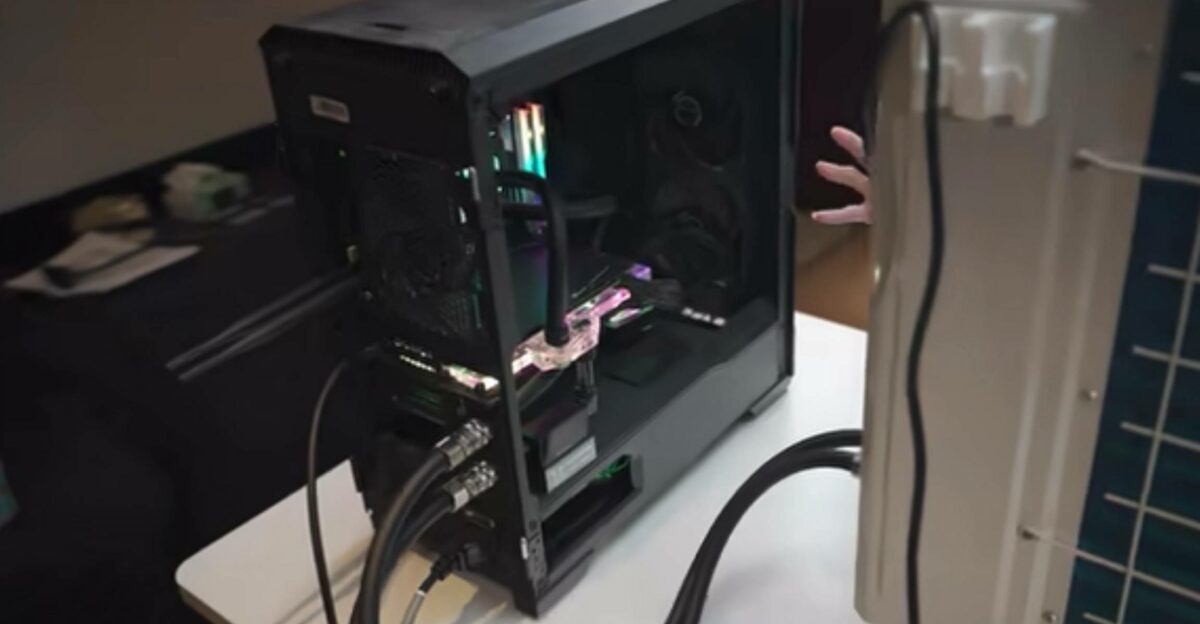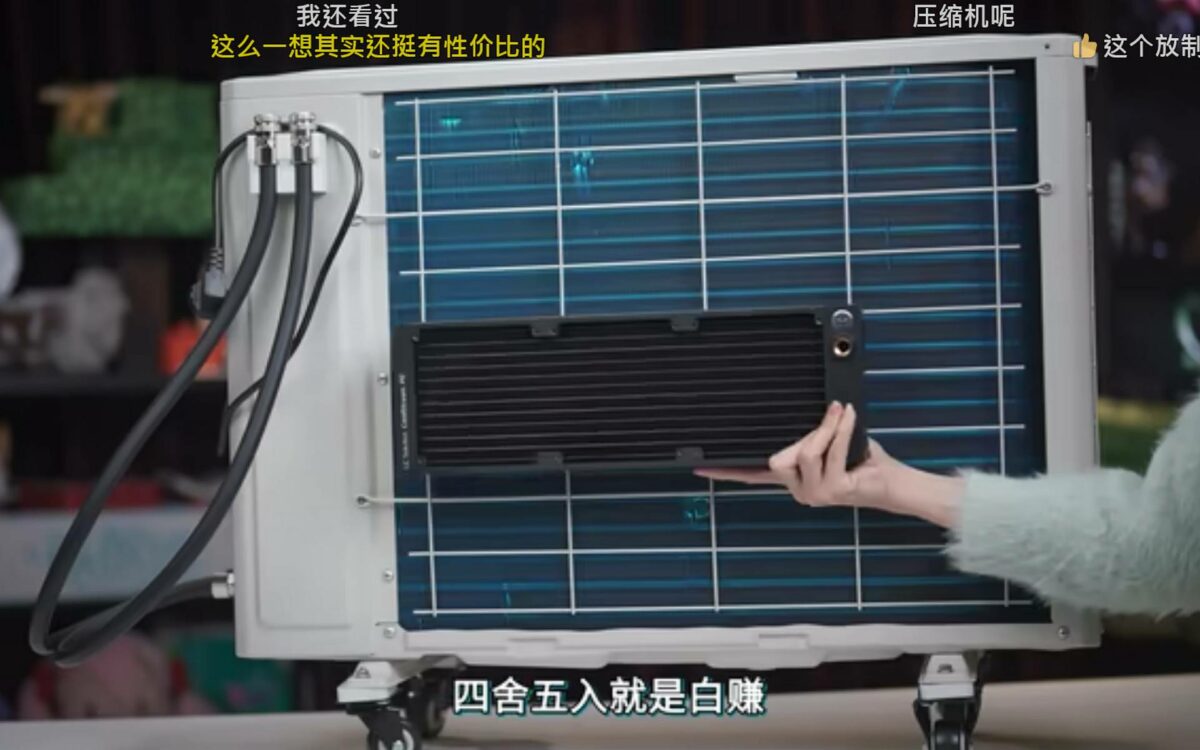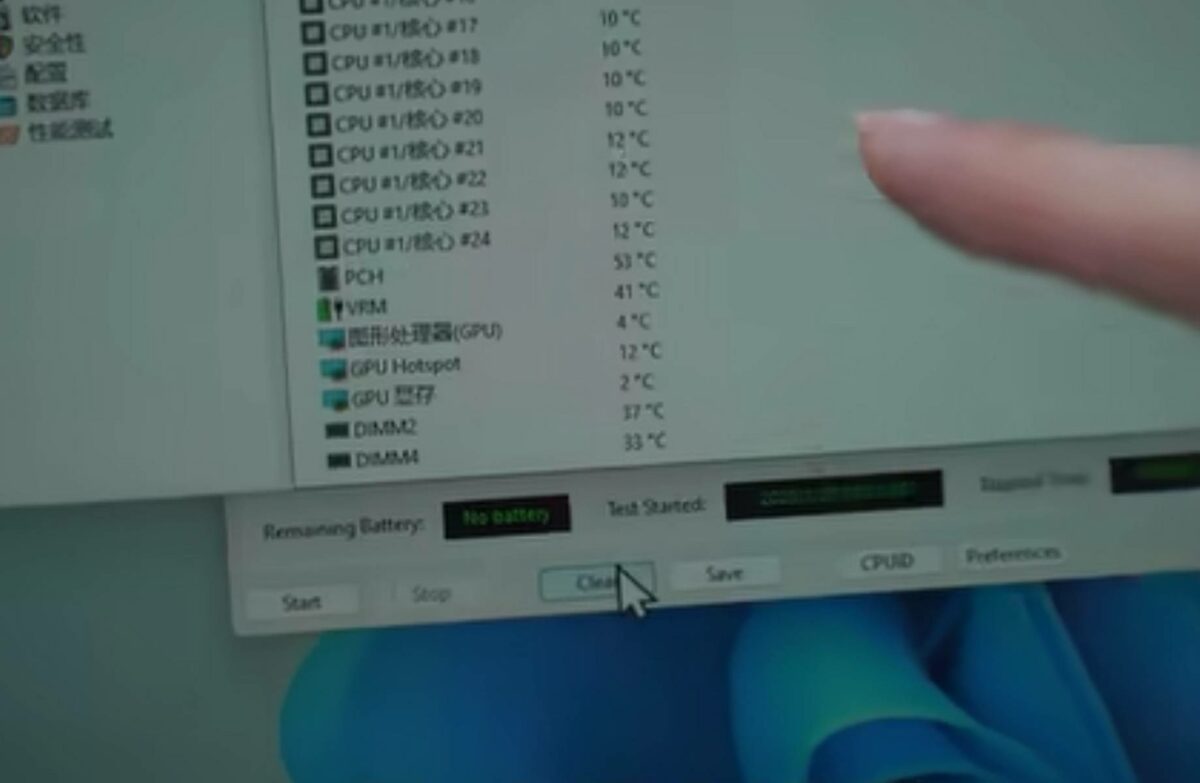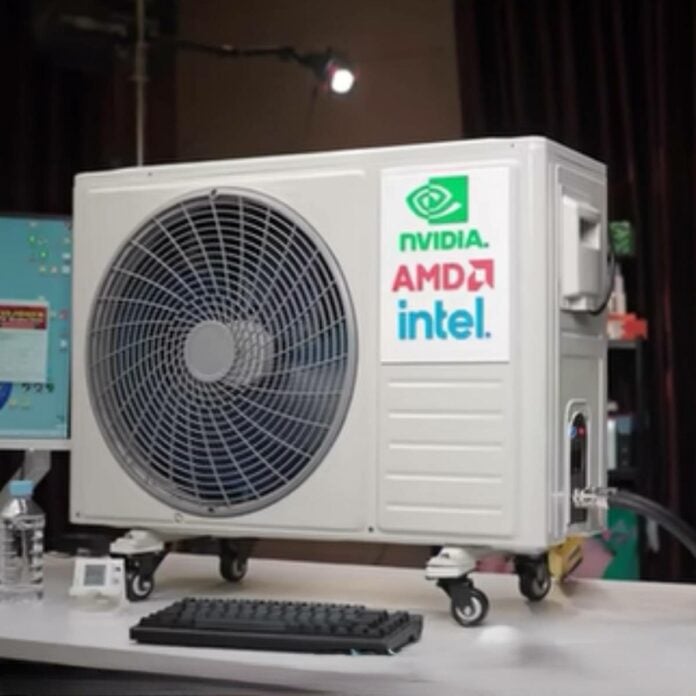Liquid cooling is nothing new but employing an air conditioning unit into the loop is certainly unorthodox but that didn’t stop one Chinese content creator from trying, and succeeding. The results are compelling, cooling one of the most-powerful graphics cards around, GeForce RTX 4090. However, the mad men behind this system have their sights set on newer, more-powerful hardware still.
The creator reconfigured a 12,000 BTU air conditioner, removing its compressor and refrigeration gas and replacing it with good old-fashioned water. The idea was to use the outdoor unit’s massive radiator and fan to cool GeForce RTX 4090 and a Core i9-13900K to boot. If not for a lack of water blocks, we could have seen an RTX 5090 instead.

After hooking everything up and launching a stress test, the GPU sensors reported a cosy 48.7°C under load, with the hotspot at 57.5°C. That said the CPU was still toasty reaching 100°C on some cores at a room temperature of about 26°C. Though not accounting for any hardware inefficiencies, the PSU indicated a total of 1,000W for this machine. From the looks of it, this contraption was good enough to handle at least four machines at once, linking through a distribution block.

When moved outside to a snowy backdrop, the GPU temp moved further down to 20°C, with the hotspot at 36°C and CPU at around 62°C. Likewise, idle temps rested at a frosty 2°C on the GPU and 10°C on the CPU. Even the GPU hotspot didn’t exceed 12°C. A bit dangerous however, as the water could start freezing if the outside temperature drops much further, potentially causing the tubes to expand and burst if left for long.

While we would have loved to see the performance of an unmodified air conditioning unit, this is both a safer and more daily drivable solution. Keeping the original compressor and refrigeration gas would have resulted in sub-zero temperatures which cause condensation and thus possibly short circuits. Not to forget the accompanying power bill. Yes, there are solutions to the condensation, such as Vaseline and isolation, but that’s too much of a hassle when 48.7°C (or 20°C when applicable) is more than enough for a gaming machine.
Since air conditioning units can last even in harsh outside environments, this idea has the potential to become a daily solution for PC cooling, assuming you have the time and cash to customise one. I for sure will keep it in mind, in case I stumble upon a cheap second-hand unit.


